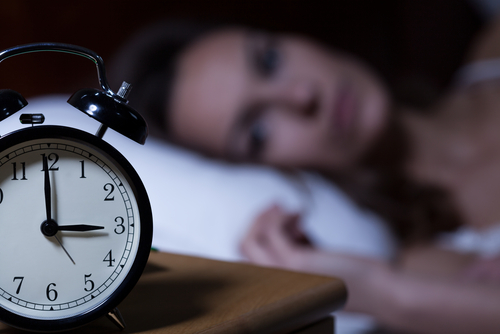What is a Maintenance of Wakefulness Test ?
It may sound a little strange to hear, but not all sleep tests conducted at sleep clinics monitor you as you sleep. One of the tests you may be asked to take is called an MWT, or Maintenance of Wakefulness Test.
While most tests are designed to diagnose sleep disorders during sleep (polysomnogram), monitor how quickly patients fall asleep (MSLT), or to calibrate CPAP machines (CPAP titration) after breathing disorders are diagnosed, the maintenance of wakefulness test is intended to challenge patients to attempt to stay awake during periodic trials.
What is a MWT?
A maintenance of wakefulness test is administered over the course of a day at a sleep laboratory and is used to measure how alert a patient is during the day and if they are capable of staying awake for a period of time in a quiet, relaxing, stimulation free environment.
 During the test, patients are given 4-5 trials of 40 minutes of relaxing in a quiet, dimly lit bedroom during which time they are asked to simply sit still while looking forward, and not do anything stimulating that could intentionally keep them awake (no talking aloud, singing, reading, pinching themselves, etc.).
During the test, patients are given 4-5 trials of 40 minutes of relaxing in a quiet, dimly lit bedroom during which time they are asked to simply sit still while looking forward, and not do anything stimulating that could intentionally keep them awake (no talking aloud, singing, reading, pinching themselves, etc.).
The rooms are meant to isolates external factors such as noise, temperature, light, and activity. Basically anything that can keep a person awake through some sort of stimulation or discomfort is removed.
Patients are connected to a variety of leads that monitor:
- heart activity with 2-3 ECG (electrocardiography) leads
- brain activity with 4 EEG (lectroencephalography) leads
- left and right eye movements
- chin movement with 3 leads
The first trial often begins 1.5 to 3 hours after the patient’s normal wake-up time. Breakfast is usually provided an hour prior to the first trial and lunch is served after the second trial.
Each trial is spaced 2 hours apart, during which time patients can watch TV, read a book, have a meal, or move freely about the clinic, but they cannot go outside as daylight is a factor that needs to be eliminated during a test.
How are results reached?
Patients that are not experiencing excessive daytime sleepiness (EDT) should not have any trouble staying awake during each 40 minute trial. The trials end either after 40 minutes have passed and patients have remained awake the entire time, or when patients fall asleep and enter at least stage 1 of non-REM sleep (although any stage of sleep reached ends the trial) for 90 seconds. If patients fall asleep at any time in the 40 minute trial, the trial is ended early.
After the 4 or five trials a sleep technologist will look over the results and send them to a sleep specialist to be reviewed. Results of the test will help determine your level of sleepiness during the day.
What patients take the test?
 A maintenance of wakefulness test is usually used in two instances:
A maintenance of wakefulness test is usually used in two instances:
- determining if previous treatment is successful (medications or CPAP therapy for sleep disorders)
- For occupations in which one’s ability to remain awake is a safety concern
If patients have been prescribed CPAP therapy or medication to treat their sleep disorders and are still complaining of excessive daytime sleepiness, a MWT may be indicated so the sleep specialist can determine just how sleepy a patient is during the day so that appropriate measures can be taken.
Increasingly, a number of occupations are requiring MWTs for workers whose jobs require long periods of low-activity where safety is a concern. These types of occupations include: truck drivers, taxi drivers, pilots, and more.
Many employers who are aware of an employees sleep disorders may want to verify that their employees are maintaining compliance with their therapy by ordering a MWT to make sure they are awake and alert during normal working hours.
Do’s and dont’s of the test
DO try and get a normal night’s worth of sleep the evening before the test.
DO wear comfortable clothing as patients are asked to dress in regular street clothes for the test.
DO NOT consume any caffeine or nicotine before or during the test as they’re considered stimulants to keep one awake.
DO NOT nap in-between trials.
DO NOT go outside in-between trials as light exposure can influence wakefulness.
If you are still experiencing excessive daytime sleepiness after you have been prescribed therapy for your sleep disorder, you may want to discuss your symptoms with your primary care physician or contact your local sleep clinic to see if a maintenance of wakefulness test is right for you.
If you work in the transportation industry and your employer wants to verify you are capable of remaining awake and alert during the day, you may need to have a maintenance of wakefulness test performed. There are serious risks to drowsy driving, and making sure you are capable of maintaining wakefulness is key to not only your own safety, but the safety of others as well.
If you live in Alaska and feel that your sleep troubles are beginning to negatively impact your life, contact The Alaska Sleep Clinic by clicking the link below, and receive a free 10-minute phone consultation with a sleep educator. In this free phone call, our highly trained staff members can help determine if a sleep study is necessary to help resolve your sleep problems.




